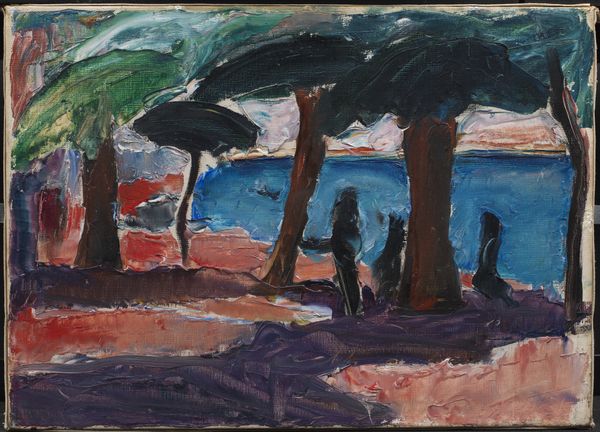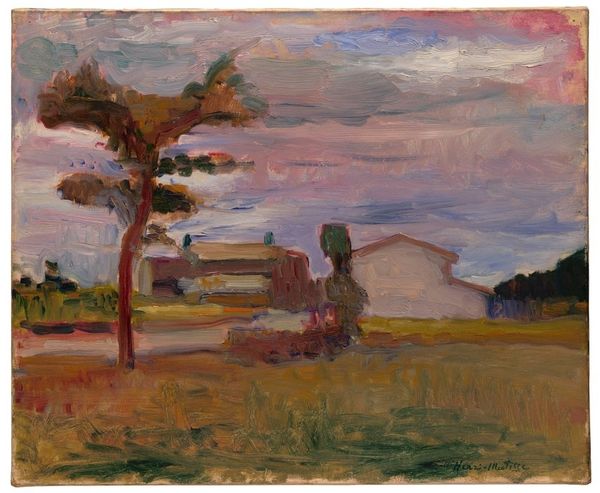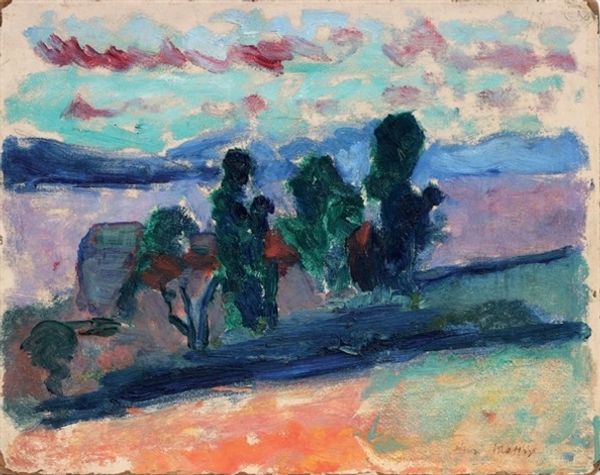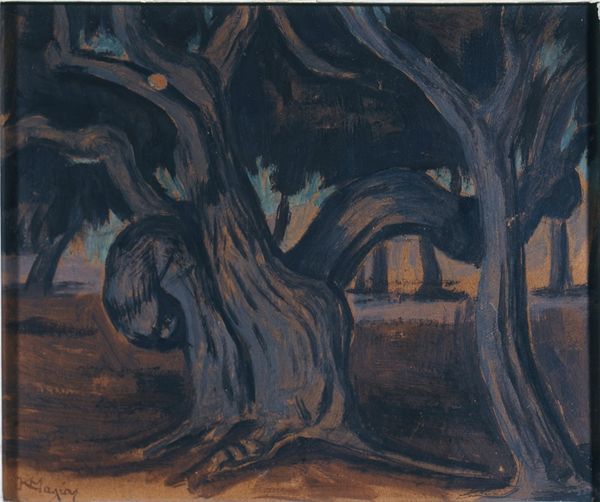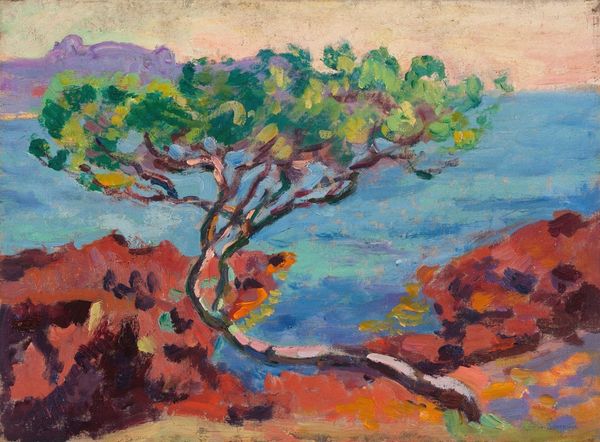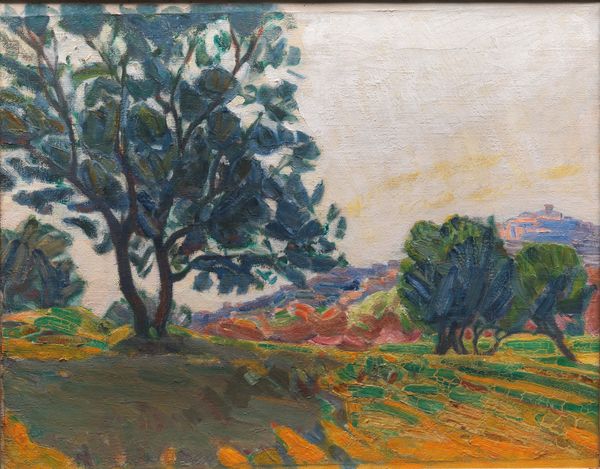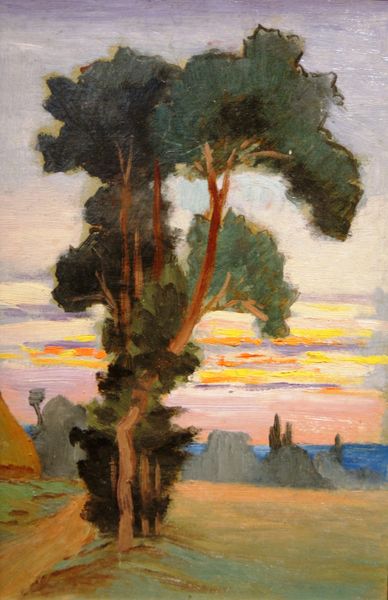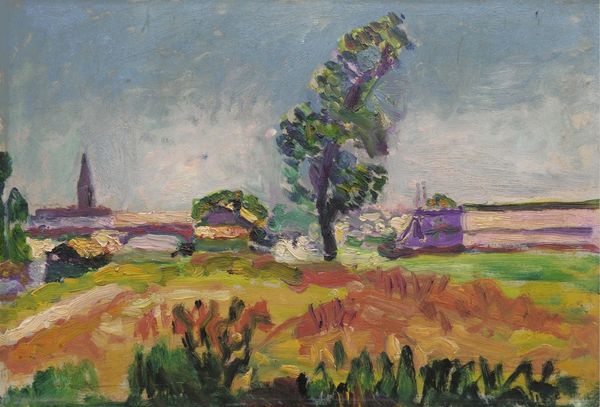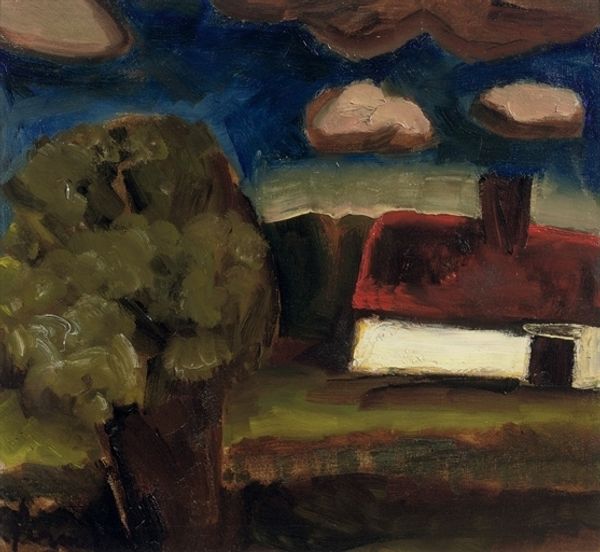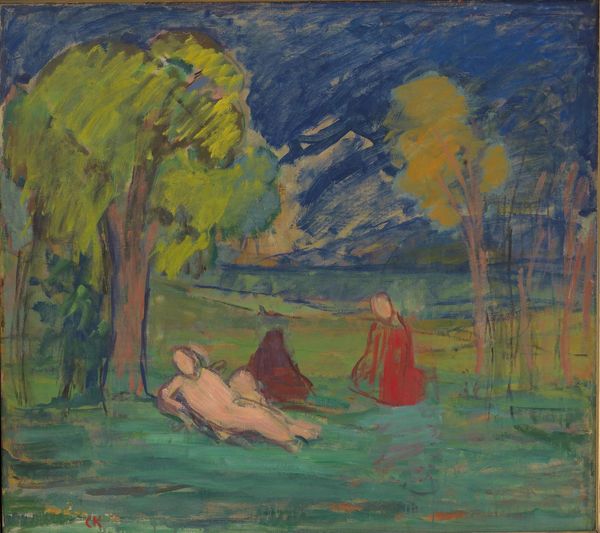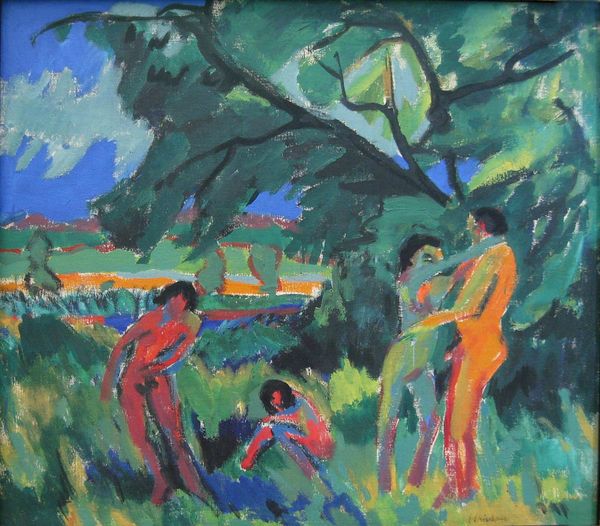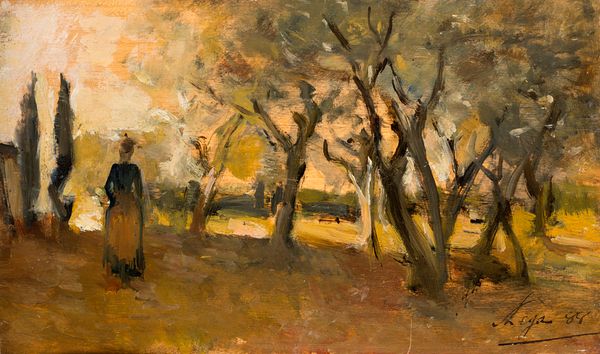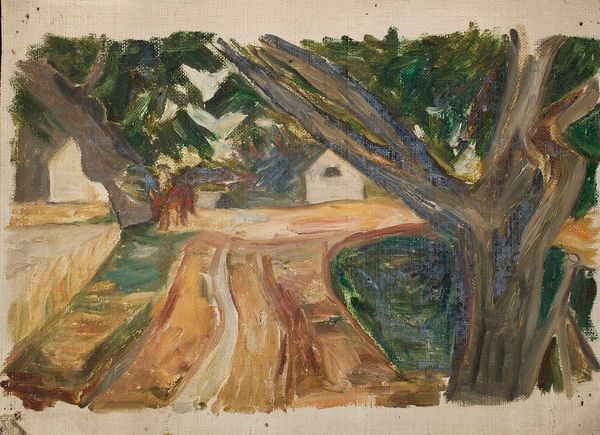
Dimensions: 50 cm (height) x 61.5 cm (width) (Netto), 69.5 cm (height) x 80.5 cm (width) x 6 cm (depth) (Brutto)
Editor: Here we have "The Thick Palm. View from Villefranche," painted by J.A. Jerichau (II) in 1915. It’s an oil on canvas, and the composition is strikingly simple – a large tree dominating the foreground. There’s almost a hazy feel to it, a dreamlike quality. How do you interpret this work? Curator: The hazy quality you notice pulls me in. I wonder about its relationship to broader discussions around imperialism and representations of the “exotic.” Given the title referencing Villefranche, in the South of France, and painted in 1915, it’s hard not to see this landscape through the lens of colonialism. How might the ‘thick palm’ become a symbol in that context? Editor: That's a fascinating point. I hadn't considered the colonial implications. The palm almost feels like it’s asserting itself in the landscape, maybe even a visual stand-in for the idea of a dominant culture, in relation to the sea or boats behind. Is that reaching too far? Curator: Not at all! It’s crucial to unpack those power dynamics inherent in landscape painting of this era. We must question whose perspective is prioritized, and what stories are being told through this depiction of nature. What is omitted as well? Who benefits from these portrayals and who is silenced or erased in the visual representation? Are there hidden figures within that shadowed area beneath the palm, witnesses silenced? Editor: It’s true, it’s easy to look at this as just a pretty scene, but you're right, it's so important to think about who is actually included and who benefits, who even had access to locations such as the south of France at this period. I hadn't considered how a landscape can have a political voice too. Curator: Exactly, even seemingly passive landscapes engage within cultural, social and historical struggles. And engaging with that context allows a fuller engagement with the work.
Comments
No comments
Be the first to comment and join the conversation on the ultimate creative platform.
